Shorthanded class showcased in Annapolis Newport Race
Published on November 21st, 2014
If participation is a measure, the Class 40 is the dominant offshore boat in the shorthanded sphere of the sport. The prestigious 3542 nm singlehanded Route du Rhum transatlantic race had 43 entrants this month, with renowned races such as the Transat Jacques Vabre and Quebec St. Malo all having a division of Class 40s as well.
Designed primarily for single-handed or double-handed racing, the high-performance monohulls have also been a fixture in such East Coast distance races as Newport-to-Bermuda and Marblehead-to-Halifax.
Now the Class 40 is coming to the historic Annapolis-to-Newport Race for the first time. Organizers with Annapolis Yacht Club have announced that the sleek, fast and exciting ocean racers will be the “featured class” for the 2015 edition of the offshore classic.
“We were hoping to get a marquee class to participate in next year’s race and the Class 40 certainly qualifies,” said Dick Neville, co-chairman of the Annapolis-to-Newport Race. “These are very innovative, high-tech offshore boats and will add an exciting element to an already premier event.”
Plans call for Annapolis-Newport to serve as third leg of a proposed East Coast Ocean Series that would begin in Fort Lauderdale with a stop in Charleston. Leg 2 would be Charleston-to-Annapolis with the Annapolis-to-Newport race committee providing a proper welcome reception for the Class 40s, which will be berthed and on display at the Annapolis Yacht Club.
“These are very cool, colorful boats with great graphics,” Neville said. “It will be just like when the Volvo Ocean Race came to town with sailing enthusiasts and tourists wanting to take a look at these unique sailboats while they are on display.”
Several owners have already committed to the series and Michael Hennessy, North American representative for the International Class 40 Association, is confident at least five of the speedy boats will compete in Annapolis-to-Newport.
Hennessy will be racing his boat named Dragon, which he has campaigned since 2009 and averaged almost 4,000 nautical miles a year. Pleiad (Ed Cesare, Newport, Rhode Island), Toothface (Mike Dreese, Boston) and Amhas (Micah Davis & Brian Harris, Portland, Maine) have also tentatively agreed to participate in the East Coast Ocean Series.
A large number of Class 40s are entered in the New York Yacht Club’s Trans-Atlantic Race, which begins in late June of 2015. If some of the Canadian or European boats heading to Newport for the Transat can make it work schedule-wise, there could be as many as nine Class 40s coming to the Chesapeake Bay for the Annapolis-to-Newport Race.
“We are thrilled to be the featured class in such a legendary race,” said Hennessy, who skippered Dragon in the 2011 Annapolis-to-Newport and found it both challenging and intriguing. “It’s a race that presents its own unique challenges with the combination of inshore and offshore elements that are both cool and tricky.”
The Class 40 was established in 2004 and was the product of ideas shared by sailors, designers and boat builders. French skipper-journalist Patrice Carpentier was at the forefront of drafting the Class 40 box rule with the intent of making offshore racing more accessible to amateur sailors. Christian Bouroullec of Structures Boatyard and Volvo CEO Pascal Jamet helped Carpentier establish the International Class 40 Association and 25 designers have since jumped into to meet the growing demand for the boats.
While the Class 40 has been wildly popular in Europe from the outset, it has only recently seen a rapid growth in North America with a total of 20 boats, 14 of which are based on the East Coast.
“The Class 40 really burst onto the scene because it filled a niche and hit a sweet spot,” said Hennessy, noting that there was no short-handed offshore platform between the 21-foot Mini Transat and the costly IMOCA 60 that professional skippers sail in the prestigious Vendee Globe.
Ed Cesare is a founding partner of Pleiad Capital, a venture company in the wellness space. A veteran offshore racer with membership in the Storm Trysail Club, Cesare serves as co-skipper and managing director of Pleaid Racing program. Cesare said that Pleaid Capital is committed to building the wellness economy and that Pleaid Racing is a combination of “passion and promotion.”
Class 40s are water-ballasted and feature twin rudders. Cesare said the boats are “a little sticky” in light air, but revel in heavy winds. Like most offshore designs, the Class 40 is best suited to power reaching and Cesare has seen a top speed of 26 knots.
“It’s a really well-organized class and the leadership has done a terrific job of keeping the boats competitive and the costs down,” said Cesare, whose first generation boat (hull No. 39) is only at a small disadvantage when racing against newer builds.
“I am very much looking forward to competing in the Annapolis-to-Newport Race and am very excited about the prospect of an East Coast Ocean Series,” Cesare said. I think it would provide a great opportunity to get the Class 40s in front of sailors who are doing double-handed racing aboard conventional boats. I think there are a lot of short-handed sailors out there who would consider buying a Class 40 if they knew more about the boat and the class association.”
The 35th edition of the Annapolis-to-Newport Race will start June 5 and 6, 2015 on the Chesapeake Bay. There is still time for skippers to take advantage of the early entry discount, which remains in place until December 1 of this year.
Event website: www.annapolisnewportrace.com
Report by event media.


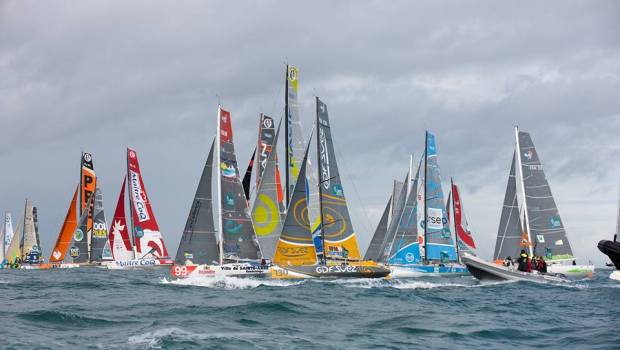


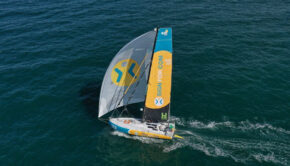
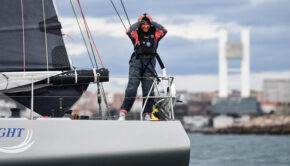
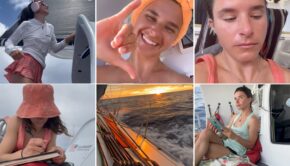
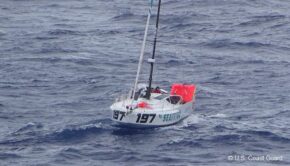
 We’ll keep your information safe.
We’ll keep your information safe.